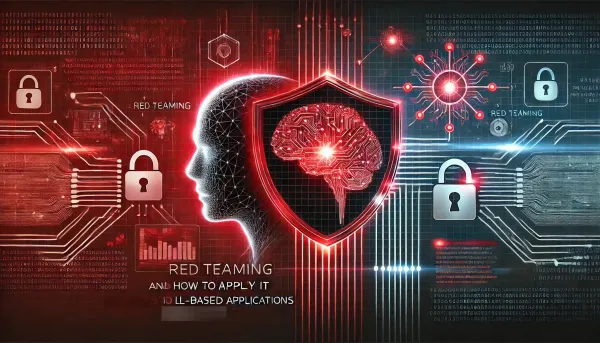How to break into security operations(SecOps)...
Security Operations (SecOps) (or) Security Operations Centers (SOC) are dynamic and essential areas in the field of cybersecurity. In a SOC, security professionals monitor, detect, and respond to cyber threats in real-time. Working in a SOC can be thrilling—it’s like being on the frontlines of digital defense! Whether you're new to cybersecurity or transitioning from another tech field, this guide will provide a roadmap to launching a career in Security Operations.
1. Understanding the SOC and Security Operations Basics
What is a SOC? A SOC (Security Operations Center) is a centralized unit where security analysts and engineers work together to detect, investigate, and respond to cybersecurity threats. The SOC operates 24/7 to monitor for any sign of malicious activity, manage incidents, and mitigate risks. The SOC team is typically organized into tiers:
- Tier 1 (Triage): Monitors alerts, performs initial assessments, and escalates if needed.
- Tier 2 (Investigation): Conducts deeper investigation, performs analysis, and responds to incidents.
- Tier 3 (Hunting and Forensics): Focuses on threat hunting, forensic analysis, and improving defenses.
- SOC Managers/Leaders: Ensure efficient SOC operation and strategic alignment with business goals.
Key Responsibilities in SecOps:
- Threat Monitoring: Using Security Information and Event Management (SIEM) tools to watch for anomalies.
- Incident Response (IR): Quickly responding to and mitigating cyber incidents.
- Threat Intelligence: Gathering data about current and emerging threats to anticipate potential attacks.
- Threat Hunting: Proactively searching for undetected threats within the network.
2. Core Skills and Certifications for Security Operations
To succeed in a SOC, you need a blend of technical skills, certifications, and a knack for critical thinking. Here’s what to focus on:
Technical Skills:
- Networking Fundamentals: Understanding TCP/IP, DNS, firewalls, and network protocols. Try lab simulations on tools like Cisco Packet Tracer.
- Operating Systems: Knowledge of Windows, Linux, and macOS; understand file systems, log management, and OS internals.
- SIEM Tools: Familiarity with SIEM tools like Splunk, QRadar, or Elastic Stack for logging and threat detection.
- Incident Response (IR): Learn about IR frameworks like NIST and tools used in incident handling, e.g., Wireshark for network analysis or Sysinternals for Windows.
Soft Skills:
- Analytical Thinking: Critical for diagnosing and solving complex issues.
- Communication: SOC roles require reporting findings clearly to other team members and stakeholders.
- Attention to Detail: SOC analysts must spot subtle signs of attacks among massive amounts of data.
Recommended Certifications:
- CompTIA Security+ (Entry-level): Covers foundational cybersecurity knowledge.
- Certified SOC Analyst (CSA): Specially focused on SOC operations and monitoring.
- GIAC Security Essentials (GSEC): Focuses on hands-on cybersecurity skills.
- Certified Incident Handler (GCIH): For deeper understanding of incident response.
- Splunk Core Certified User/Power User: Useful for SIEM skills specific to Splunk.
3. Hands-On Labs and Projects
Getting hands-on experience is essential in security operations. Here’s how to get started:
Virtual Labs:
- TryHackMe and Hack The Box: Practice hacking, detection, and forensic skills in a safe, gamified environment.
- Splunk and ELK Stack Labs: Many labs simulate SOC-like scenarios where you analyze logs and detect threats.
- Wireshark Labs: Practice packet analysis, which is crucial for network forensics.
Projects to Build Your Skills:
- Build a Home SOC Lab: Set up virtual machines, configure a SIEM, and simulate alerts to understand real-world security monitoring.
- Incident Report Writing: Simulate an incident response process and write reports detailing the incident and response actions. This is great practice for documentation and report writing.
- Threat Hunting and Log Analysis: Download sample logs from resources like the Splunk Boss of the SOC (BOTS) datasets and practice analyzing them.
4. Finding Your First SOC Job
SOC Job Titles to Look For:
- SOC Analyst (Level 1, 2, 3)
- Cybersecurity Analyst
- Threat Intelligence Analyst
- Incident Response Specialist
How to Stand Out:
- Showcase Your Skills: Display projects on GitHub or write blog posts about your SOC lab experiences, threat hunting, or analysis.
- Network: Attend cybersecurity events, join local security groups, and connect with SOC professionals on LinkedIn.
- Prepare for Technical Interviews: Practice common questions related to networking, operating systems, and incident response. Be ready to discuss your approach to analyzing incidents, responding to alerts, and managing SOC workflows.
5. Moving Up in Security Operations
Once you have foundational SOC experience, aim to build expertise that will help you advance:
Focus Areas for Growth:
- Threat Intelligence and Hunting: Specialize in proactive threat detection techniques and learn about advanced persistent threats (APTs).
- Digital Forensics and Incident Response (DFIR): DFIR specialists dive deep into forensic investigations and complex incident responses.
- SOC Management: Consider a transition into SOC leadership, where you’ll oversee SOC processes, optimize tools, and lead a team.
Advanced Certifications:
- Certified Information Systems Security Professional (CISSP): Advanced knowledge across security domains.
- Certified Ethical Hacker (CEH): Helps understand attacker perspectives, useful for threat hunting.
- GIAC Certified Incident Handler (GCIH) and GIAC Certified Forensic Analyst (GCFA): Advanced knowledge in IR and forensics.
6. SOC Tools and Resources to Explore
Stay updated on industry trends and tools used in SOC environments:
Tools:
- SIEMs: Splunk, IBM QRadar, ELK Stack.
- Threat Intelligence Platforms: Recorded Future, ThreatConnect.
- Forensics: Autopsy, FTK, X-Ways.
- Endpoint Detection and Response (EDR): CrowdStrike, Carbon Black, Microsoft Defender.
Resources:
- Books: The Blue Team Handbook, Practical Threat Intelligence and Data-Driven Threat Hunting.
- Blogs and Forums: SANS Reading Room, Dark Reading, Reddit’s r/cybersecurity.
- Podcasts: Darknet Diaries, Security Now, and The CyberWire.
Conclusion
Breaking into Security Operations and SOC is challenging yet immensely rewarding. As a SOC analyst, you’re on the frontlines defending against threats, responding to incidents, and ensuring the safety of digital assets. By building your technical skills, gaining hands-on experience, and understanding the SOC workflow, you’ll be well-prepared to begin your journey. Cyber threats are ever-evolving, so stay curious, continue learning, and embrace the excitement of this fast-paced field. Your role in the SOC is a critical part of cybersecurity's grand puzzle—one alert, one investigation, one threat neutralized at a time!
-thesecguy


